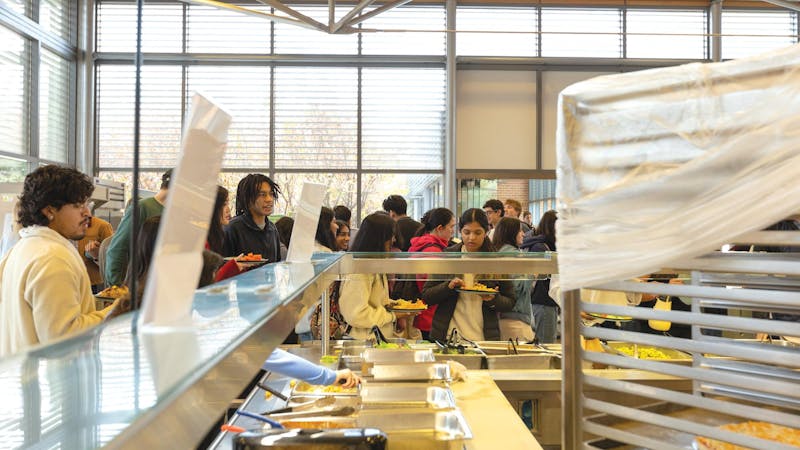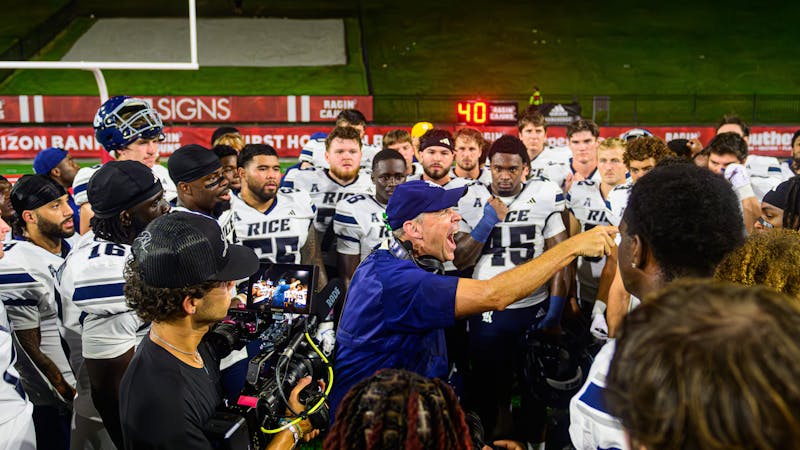IMAX Hubble 3D gives astronomical scenes
Rice University engineering students are extremely attached to the idea that hard work in college equates to incredible post-graduate payoffs. But how many engineers foresee knighthood as a possible fringe benefit? Last year, Queen Beatrix of the Netherlands knighted Edward Cheung to honor him for his work and outreach as the head engineer of the Hubble Space Telescope Development Project. This honor came on the heels of the final servicing mission in 2009 to repair the Hubble Space Telescope.
Hubble 3D, a Warner Brothers production in cooperation with NASA, records the final 2009 service mission by the seven-member astronaut crew of STS-125 Space Shuttle Atlantis. The 2010 documentary is directed by Toni Myers (Space Station 3D), and narrated by Leonardo DiCaprio (Inception), K. Megan McArthur, the STS-125's flight engineer and Scott Altman, the STS-125's commander.
Houston's Museum of Natural Science presents Hubble 3D in its IMAX theater, complete with full-range surround sound. Though the film slowly begins with a rather clichéd synchronization of an image of Earth and Israel Kamakawiwo'ole's "Somewhere Over the Rainbow," the storyline immediately changes to the main characters of the film, the seven astronauts. The astronauts invite us into their minds as they anticipate the upcoming expedition. Behind their helmets are a smile of excitement from Megan McArthur, and a contemplative scowl from mission specialist, John Grunsfeld. Their accompanying narrations of their emotions are as invaluable as the footage.
Hubble 3D chronicles the 14-day, 5.3 million-mile expedition of STS-125 to save the Hubble Space Telescope. An exterior 3D camera, along with helmet cameras attached to the spacewalkers, and a handheld camera used by the crew within the cabin, captured footage for the movie. Myers plays a role more akin to an editor, as the framework of the mission lends itself to its own episodic sequence. The film highlights each day of the mission, including preparations in the Johnson Space Center, the shuttle launch, the safe touchdown, the five spacewalks and the major upgrades done to the telescope.
The sun rises every 90 minutes as the Atlantis, connected to Hubble by a 49-foot robotic arm, travels around Earth. The 3D camera captures vistas of South Africa's Cape Peninsula and the Hawaiian archipelago. Four spacewalkers, Grunsfeld, Mike Massimino, Andrew Feustal and Michael Good, spend as long as eight hours at a time outside the shuttle cabin replacing and upgrading cameras, spectrographs, sensor units and battery modules on the Hubble Space Telescope.
Every renovation to the telescope risks both the life of the mission specialist and the function of the telescope. One rip of a glove and the spacewalker's oxygen would dissipate from his spacesuit; one touch to the wrong wire and the telescope would be rendered non-operational, deeming the mission a failure.
"It's like conducting brain surgery with oven mitts," first-time spacewalker Feustal said, regarding his painstaking job of replacing a rate sensor unit on the telescope.
Beyond an inside look at astronaut life, the most remarkable footage of the movie comes from the Hubble Space Telescope itself. This movie aptly illustrates just why the Hubble Space Telescope took 10 years and 10,000 people to build, why it has been in orbit for over 20 years and why many brave men and women have eagerly risked their lives on missions to repair and improve the "Great Silver Bird."
As an STS-125 crewmember narrates, "The Hubble Space Telescope allows us to go to places so far away, that it's inconceivable that humans will ever go there."
The pristine images offered by Hubble allow the audience to venture into the depths of the cosmos. The advanced optical lenses and mirrors of the telescope distort the solar system, allowing viewers to travel 150 trillion miles per second to reach Orion's nebula and watch the birth of infant solar systems, known as Tadpoles, within the nebula's canyon. Hubble's infrared cameras reveal young star clusters, thousands of galaxies and a massive black hole ten billion light years away.
Hubble 3D excels as an IMAX movie because it's not a computer animation or a fantastical reenactment. The STS-125 astronauts embody the apex of the human race, and the telescope images captivate lay viewers and scientists alike. Regardless of your view on space exploration, this 40-minute documentary is a must-see, but hurry; this film is only showing until Nov. 10.
More from The Rice Thresher

Over 1,000 students petition against new meal plan
When Konstantin Savvon opened the Housing and Dining email announcing the new unlimited meal plan, he was instantly concerned about the impact on off-campus students like himself.

Rice football wins season opener under new coach
For the first time since 2018, Rice football opened its season with a victory. Scott Abell was soaked with yellow Powerade following a 14-12 win on the road Saturday against the University of Louisiana at Lafayette, which won 10 games and made it to the Sun Belt Conference championship last season.

Acting like an athlete: Rice basketball alum takes on Broadway
Underneath Chadd Alexander’s Broadway costume, there’s ankle tape and wrist braces — same protective gear he wore as a walk-on basketball player at Rice, though now he’s performing eight shows a week in the ensemble of “Harry Potter and the Cursed Child” instead of running conditioning drills in Tudor Fieldhouse.

Please note All comments are eligible for publication by The Rice Thresher.